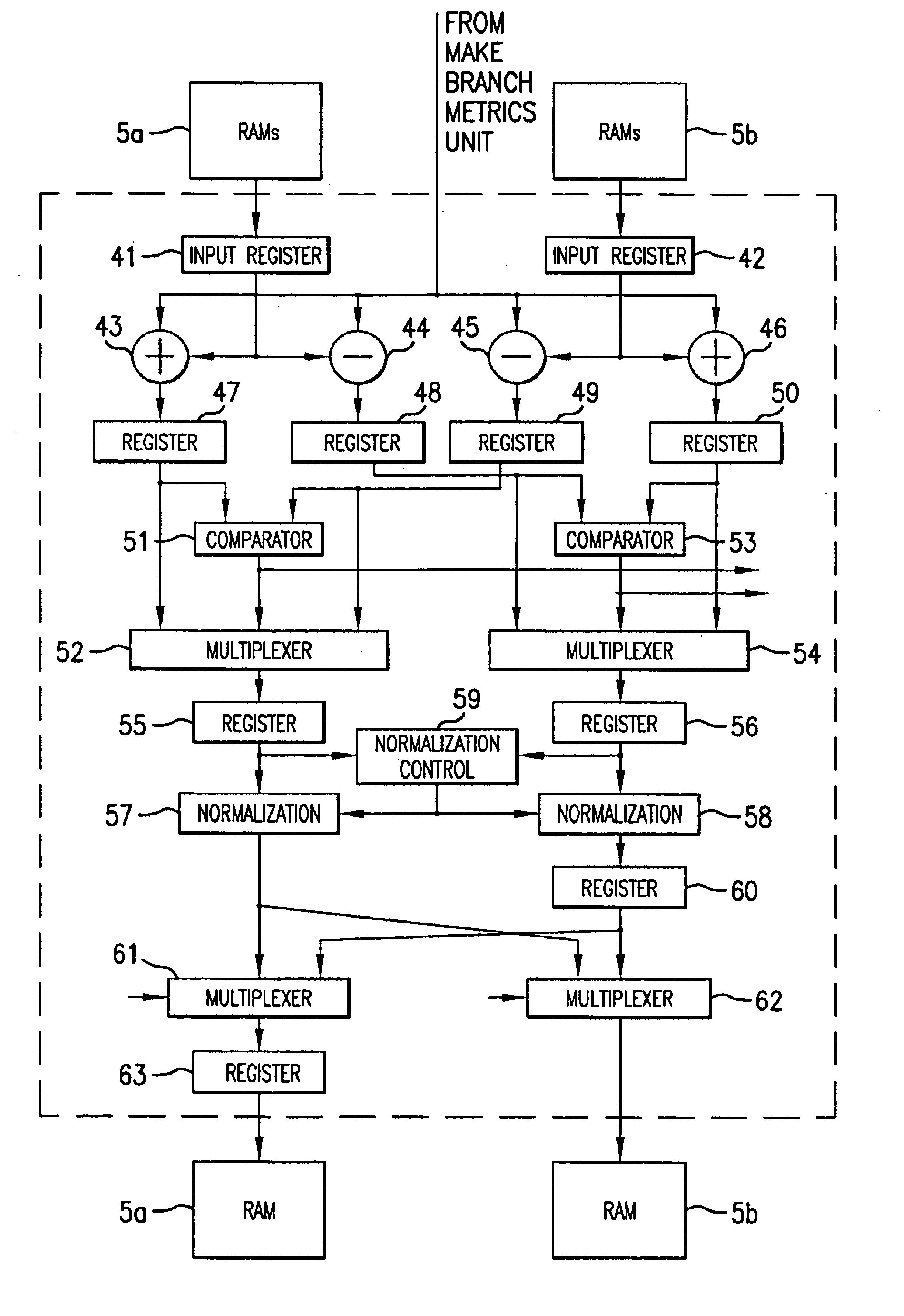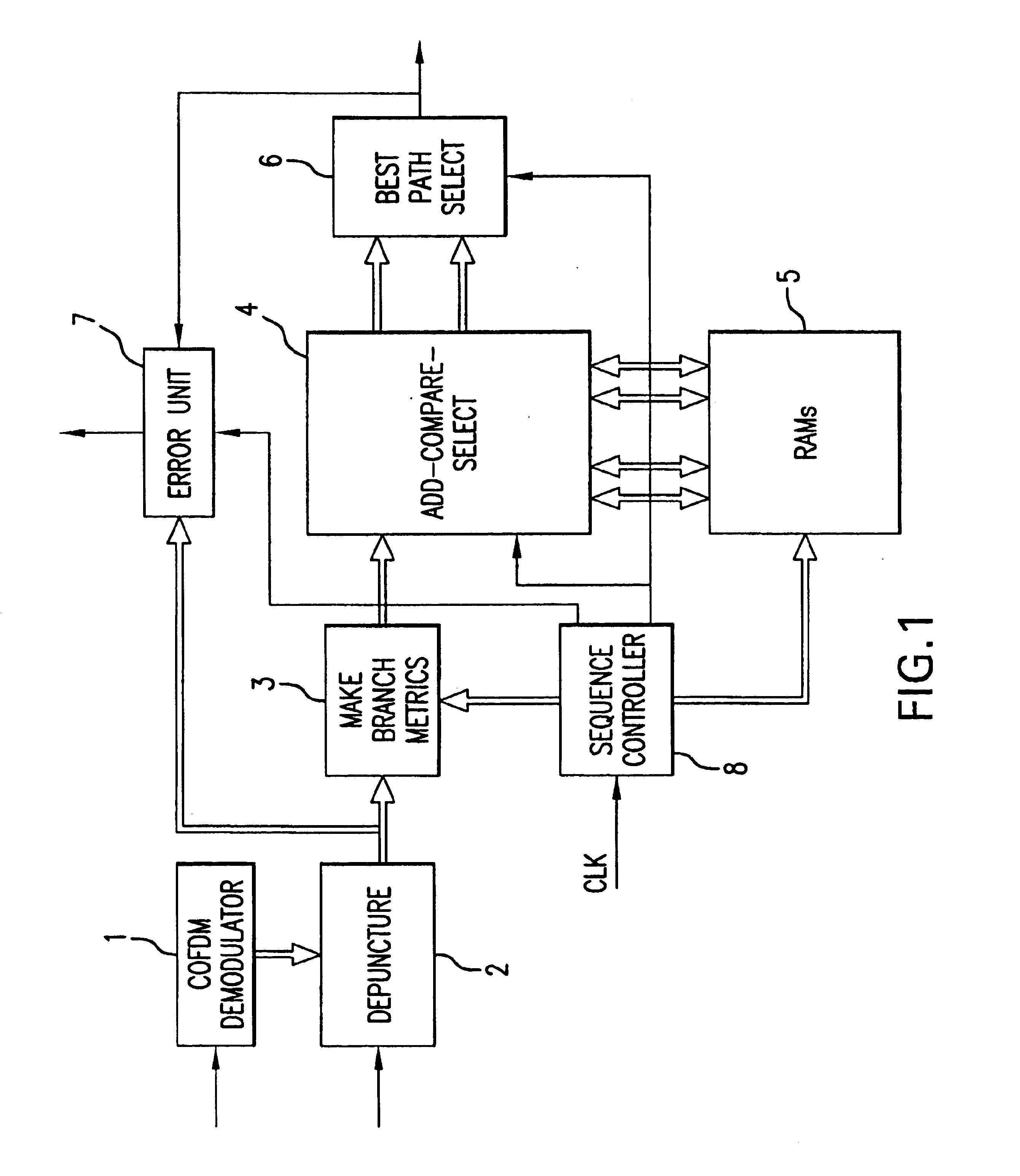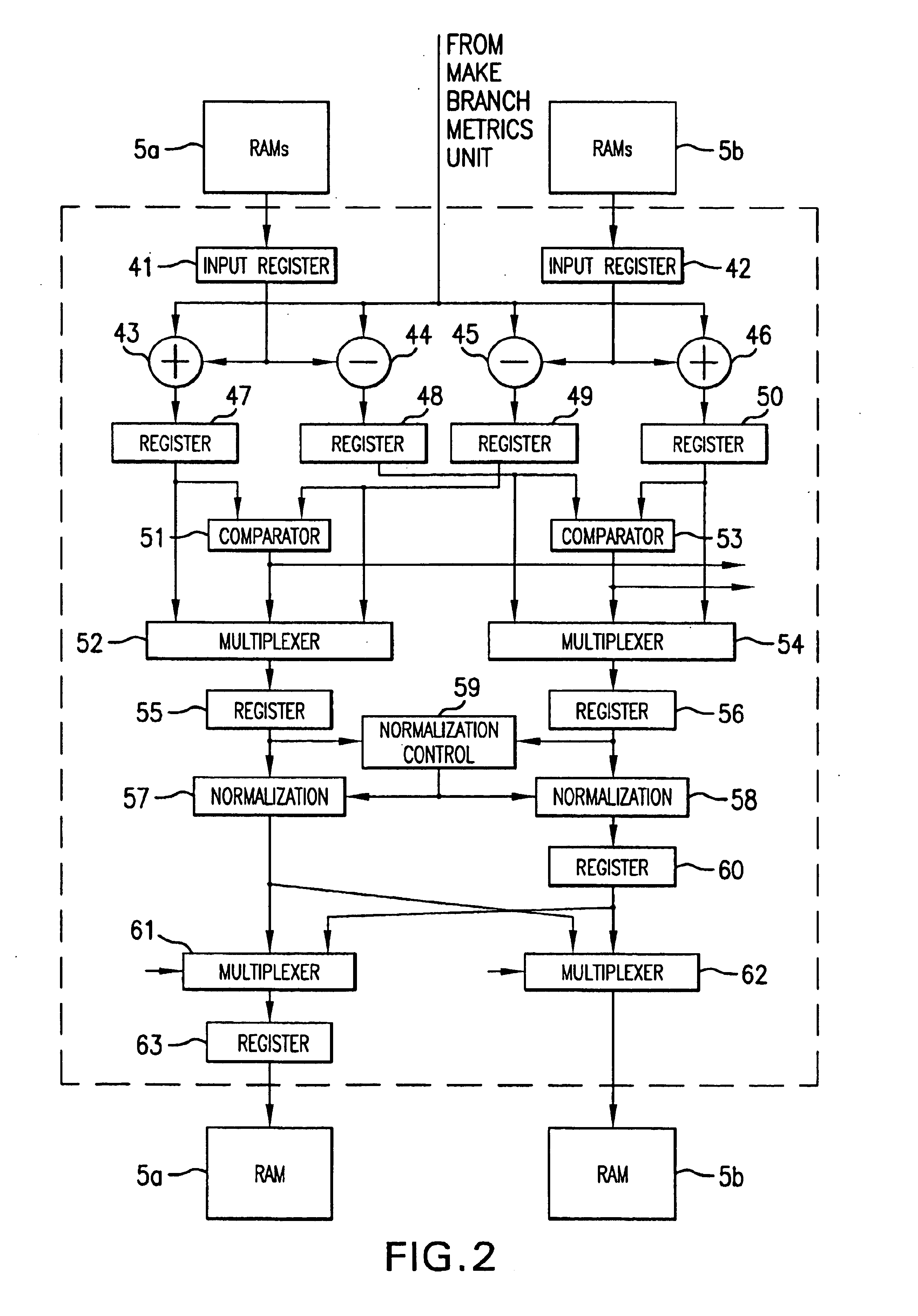Viterbi decoder with pipelined parallel architecture
a parallel architecture and decoding technology, applied in the field of decoding devices, can solve the problems of limiting the available equipment to the reception, preventing the use of a whole frame for one high bandwidth service, and computationally intensive decoding process
- Summary
- Abstract
- Description
- Claims
- Application Information
AI Technical Summary
Benefits of technology
Problems solved by technology
Method used
Image
Examples
Embodiment Construction
An embodiment of the present invention will now be described, by way of example, with reference to the accompanying drawings.
In the following description, the term "frame" will be used to indicate the processing associated with one convolution code symbol. In the exemplary system described below, each such code symbol comprises a four-bit code, each bit of which is itself represented by a four-bit soft code.
Referring to FIG. 1, a COFDM (coded orthogonal frequency division modulation) demodulator 1 demodulates received signals and outputs soft decision format codes in a manner well-known in the art. The output of the COFDM demodulator 1 is applied to a depuncturing unit 2.
DAB services are transmitted with varying degrees of puncturing, from no puncturing (four bits transmitted for each bit of data) to heavy puncturing (nine bits transmitted for every eight bits of data). If puncturing is used, it is necessary to reinstate the omitted bits at the decoder. The missing bits are generate...
PUM
 Login to View More
Login to View More Abstract
Description
Claims
Application Information
 Login to View More
Login to View More - R&D
- Intellectual Property
- Life Sciences
- Materials
- Tech Scout
- Unparalleled Data Quality
- Higher Quality Content
- 60% Fewer Hallucinations
Browse by: Latest US Patents, China's latest patents, Technical Efficacy Thesaurus, Application Domain, Technology Topic, Popular Technical Reports.
© 2025 PatSnap. All rights reserved.Legal|Privacy policy|Modern Slavery Act Transparency Statement|Sitemap|About US| Contact US: help@patsnap.com



